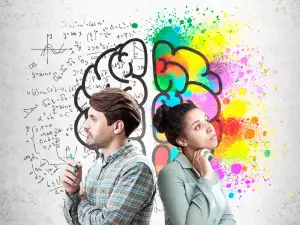We humans may have achieved a lot as a species but have a part of our brain that prevents us from keeping track of more than 4 things at once. A new American study shows that the working memory in humans has a noticeable absence of mental power but can also, on rare occasions, trigger additional visual and sound processes, occurring in the brain, so that we can solve a given problem.
"There is so much information around us, while our brains are still very limited as far as the amount of data they can process, " says prof. David Somers from Boston University. "Our society needs our constant attention so it can function properly, " he adds.
The professor is author of a study that is trying to shed light on this mystery of human neurology or in other words - how people achieve so much with such limited attention.
"Working memory is the system responsible for the temporary storage and processing of information. Even though it is sometimes used as a synonym for short-term memory, the 2 terms are different. We can fit a lot more information in our short-term memory because it does not require manipulation or organization of the data, " says Somers.
"Working memory in general was thought to have a limited capacity and researchers believed it could only store 7 types of data, " the professor adds. "These types of data can be numbers, letters, words or other units but nothing more. With the latest research, this number was reduced to 4."
Prior to the latest study, scientists thought that visual information from the eyes and sound information from the ears came together and only then reached the frontal lobes, where abstract thought develops.
But Somers' study reveals that the frontal lobe has 2 networks, 1 of which serves to interpret visual signals and the other - sound signals. The professor calls these parts the "system of conventional wisdom".
His experiments have shown that the 2 networks can work together in close collaboration. The visual network helps us understand what's going on around us, while the sound network helps us understand the events occurring over time. When the networks work in unison, our brain capacity can increase.
This happens rarely and only in critical situations, when our body is filled with adrenaline. But the American scientists have ambitions to find a method with which we can boost our brain capacity without having to put our life in danger.














